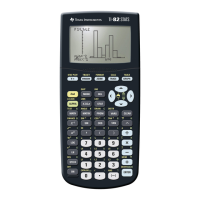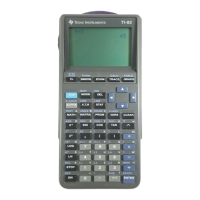Math, Angle, and Test Operations 2.17
82STAT~4.DOC TI-83 international English Bob Fedorisko Revised: 10/28/05 12:19 PM Printed: 10/28/05 12:20
PM Page 17 of 26
Complex numbers in results, including list elements, are
displayed in either rectangular or polar form, as specified by the
mode setting or by a display conversion instruction (page 2.19).
In the example below,
re^qi and Radian modes are set.
Rectangular-complex mode recognizes and displays a complex
number in the form
a+bi, where a is the real component, b is the
imaginary component, and i is a constant equal to
-1
.
To enter a complex number in rectangular form, enter the value
of a (real component), press à or ¹, enter the value of b
(imaginary component), and press y [i] (constant).
real component(
+ or N)imaginary componenti
Polar-complex mode recognizes and displays a complex number in
the form re^
q
i, where r is the magnitude, e is the base of the natural
log,
q
is the angle, and i is a constant equal to
-1
.
To enter a complex number in polar form, enter the value of r
(magnitude), press y [
e
x
] (exponential function), enter the
value of
q
(angle), press y [i] (constant), and then press ¤.
magnitudee^(anglei)
Interpreting
Complex Results
Rectangular-
Complex Mode
Polar-Complex
Mode

